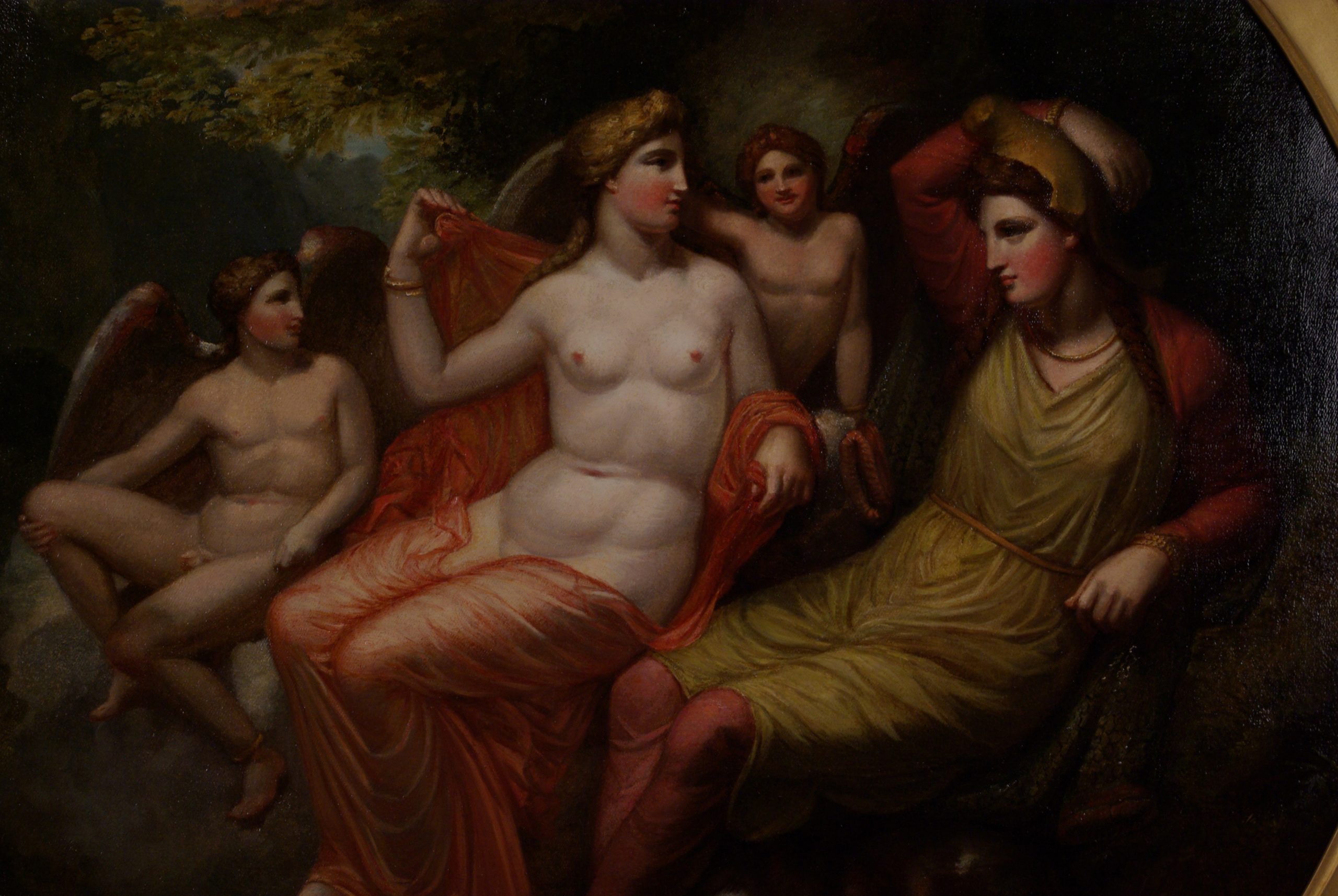Paris & Helen ~ Andrea Appiani /Circle.
£8,700.00
Out of stock
Paris & Helen ~ Andrea Appiani /Circle.
Description
| Title: | Paris & Helen with Cupids, seated on a rock with a dog beside. |
| Artist: | Andrea I Appiani Circle of (1754-1817) Italian |
| Detail: | Circular oil on canvas: 24 x 24 in. frame: 31 x 31 in. Circa 1790 |
| Price: | £8,700 |
| Location: | Hungerford |
Share:
Artist Biography
Andrea Appiani was born in 1754 in Milan, where he studied under Carlo Maria Giudici , and then Martin Knoler at the Ambrosiana, at Ospedale Maggiore. From 1776, he trained at the Accademia di Brera.
In 1795, Appiani was inducted into the court, and was named “Commissario Superiore” and was responsible for selecting the art works in Lombardy and Veneto that were to be delivered to Venice. In 1801, the government commissioned Jacques-Louis David (1748–1825) and Appiani to paint
“Napoleon brings peace to Europe”.
In 1803, Appiani travelled to Bologna and Parma in his capacity as commissar. He painted the frescoes in Palazzo Reale depicting the “Apotheosis of Napoleon as Triumphant Jupiter and the fall of the Colossi”.
He travelled to Paris to participate in Napoleon’s coronation, and belonged to a commission of artists and academics responsible for overseeing the consolidation of art works in the French capital. In May 1805, Appiani also took part in Napoleon’s coronation in Milan.
Napoleon, I named Andrea Appiani his “first court painter” and commissioned him to paint works in the Palazzo Reale in Milan. In 1808, he began a series of frescoes depicting “Napoleon’s Apotheosis” He also decorated the Palazzo’s Sala Rotonda with allegorical frescoes . Appiani died in 1817 in Milan.
Provenance:
Sold by Christie’s, March 26, 1904.Lot 178, Italian School. Paris and Helen. Property of C.H.T. Hawkins*, Esq., deceased, late of 10 Portland Place, W , to ‘Parsons’ (Art dealer).
Gallery note: We are very grateful to Dr. Bettina Baumgartel, Head of the painting collection of the Museum Kunstpalast Düsseldorf, and leading expert on the works of Angelica Kauffman for her kind assistance with our research.
















